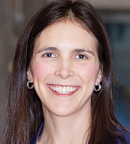
The fact that more than one-third of male respondents and nearly two-thirds of female respondents who were diagnosed with cancer after the initiation of the Cancer and Fertility Program still were not satisfied with certain aspects of the information they received about fertility is a call to action.— Kathryn J. Ruddy, MD, MPH
Tweet this quote
It is more and more common for people to wait until their 30s or 40s to have children. Consequently, many young adults have not completed their desired childbearing when they are diagnosed with cancer. Cancer treatments can impair fertility directly (usually via gonadotoxicity from chemotherapy, radiation, or surgery) or indirectly (by causing delays in reproduction that allow natural declines in fertility for women).
Fortunately, fertility-preservation techniques are improving (for example, unfertilized eggs can now be frozen for women who do not wish to use donor sperm or the sperm of an existing partner to create fertilized eggs for prechemotherapy cryopreservation). Although these techniques are still often unsuccessful, most fertility-preservation strategies (including freezing of eggs or sperm) are most effective when offered before gonadotoxic therapy begins, so it is critical that information about fertility preservation be provided soon after diagnosis.
However, many cancer patients do not receive the fertility-related information they need at the time they need it, and not all who receive education about fertility go on to pursue fertility preservation (even if they are interested in future childbearing).1-4 Finances may be an obstacle to fertility preservation for some, but in countries where fertility preservation is routinely covered for patients with cancer, there are still many young patients (particularly women) who do not receive reproductive assistance.5
A Valuable Template
As summarized in this issue of The ASCO Post, Kelvin and colleagues6 reported on changes in patient satisfaction with fertility-related education following the introduction of a Cancer and Fertility Program in 2009 at a National Cancer Institute–designated comprehensive cancer center. Their elegant description of program components will serve as a valuable template for other institutions and oncology practices. In both male and female patients, the majority of whom were white and college-educated, satisfaction with information received about a variety of important aspects of fertility preservation was higher after the program began.
It is important to note that survey response rates were suboptimal in this study (particularly for the more recent cohort, likely due to recruitment via mail/e-mail rather than in person), which may have biased the results toward greater satisfaction because those who were not satisfied may have been less likely to respond. Furthermore, other factors may have impacted satisfaction with fertility knowledge outside of the Cancer and Fertility Program, including increased national awareness of the importance of fertility preservation before cancer treatment as well as the previously mentioned advances in fertility-preservation techniques.
However, given that the satisfaction levels with fertility knowledge in the study by Kelvin et al were substantially higher in the female participants who actually took advantage of the Cancer and Fertility Program by visiting with a fertility clinical nurse specialist, it is likely that fertility counseling was of value, at least to women (consistent with findings from Letourneau et al).7 Surprisingly, male participants were not asked whether or not they had seen a fertility clinical nurse specialist, so this comparison was only possible in women.
Use of Fertility Preservation: A Relevant Endpoint?
In addition, the proportion of patients who undergo fertility-preservation techniques is a relevant endpoint for studies of fertility concerns in oncology. In the study by Kelvin and colleagues, the respondents to the post-program initiation survey reported receipt of fertility preservation at a rate that was substantially higher than the national average, but this could be due to a response bias (ie, those who underwent fertility preservation may have been more likely to respond to the survey). Thus, it remains uncertain whether or not the Cancer and Fertility Program impacted the use of fertility-preservation techniques.
A previous study of a fertility-focused decision aid revealed reduced decisional conflict and decisional regret about fertility-related treatment options and improved fertility-related knowledge in patients with breast cancer, but no increased pursuit of fertility-preservation techniques.8 However, a multicenter longitudinal cohort study that was not focused on any specific intervention showed that the proportion of patients with breast cancer who pursued fertility-preservation strategies increased from 5% in 2006 to 15% in 2012.1 However, again, this may reflect expanding advocacy around this issue nationally as well as improvements in access and options.
A Call to Action
Encouragingly, Kelvin and colleagues found that the popularity of their Cancer and Fertility Program increased over time (with 79 patients referred in 2009 and 429 patients referred in 2015), suggesting that clinicians were satisfied enough with it to recommend it to a growing number of patients. With approximately 650 newly diagnosed patients receiving fertility-threatening oncologic therapy at that comprehensive cancer center annually, it does appear that the majority of those for whom a visit with a fertility clinical nurse specialist could be helpful were using the program by 6 years after the program was implemented. However, not all of the patients who received materials ever read them, and some patients who were seen after the program began still reported they did not undergo fertility preservation due to a lack of knowledge.
These findings speak to the fact that loss of fertility due to cancer treatments is a significant concern for many young patients, and additional work is needed to optimize education around and access to fertility preservation (even at comprehensive cancer centers). The fact that more than one-third of male respondents and nearly two-thirds of female respondents who were diagnosed with cancer after the initiation of the Cancer and Fertility Program still were not satisfied with certain aspects of the information they received about fertility is a call to action. Also, future research should aim to include substantial numbers of nonwhite patients so study results are more generalizable. It is imperative that we continue to work to better meet the needs of all our young patients who are concerned about fertility. ■
Disclosure: Dr. Ruddy reported no potential conflicts of interest.
References


